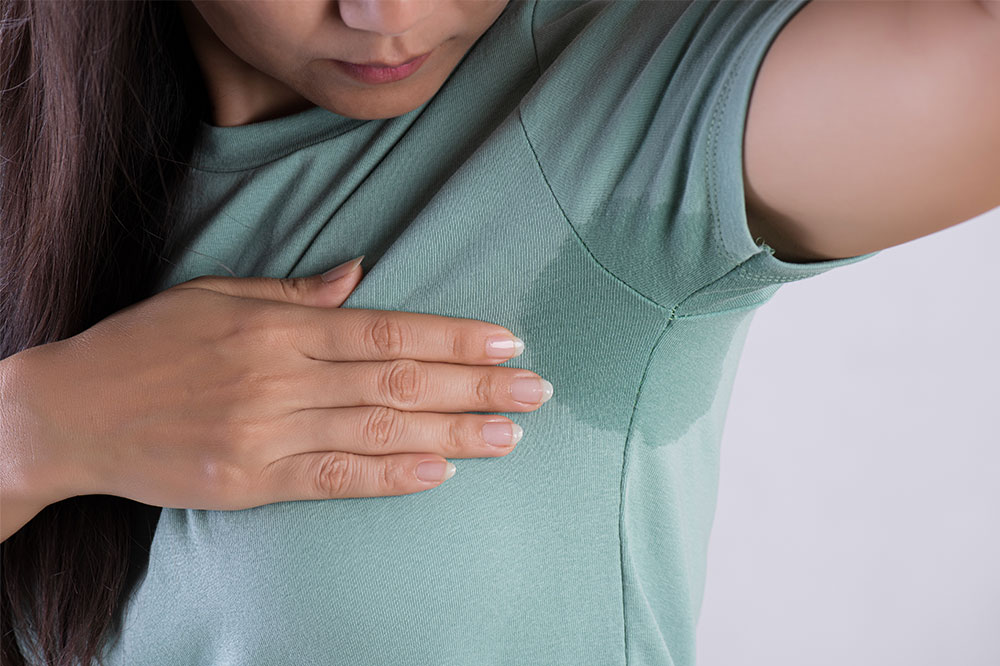
Hyperhidrosis – Causes and management options
Sweating is a natural process that helps regulate body temperature, and one may experience excessive sweating after spending some time in the sun or engaging in vigorous physical activity. But, one is said to have hyperhidrosis if they experience excessive sweating without any physical activity, producing at least 5 times more sweat than one normally does. Here, one perspires profusely throughout the day and even when sleeping. However, the condition can be managed through treatment.
Causes
Hyperhidrosis is divided into the following two types based on the cause:
Primary focal: This is caused by faulty nerve signals that cause the glands to produce excessive sweat. Here, no apparent medical concerns trigger sweating in the armpits, palms, face, or feet. It typically develops during childhood or adolescence. People affected by primary focal hyperhidrosis may experience constant sweating except when sleeping.
Secondary generalized: Here, other health issues may trigger the condition. It can be a symptom of anxiety disorders, nerve damage, thyroid problems, or menopause. People may sweat in larger areas of the body and may perspire even while sleeping.
If one notices excessive perspiration, they should consult a doctor to check for underlying health issues that might trigger the condition.
Complications
Constant and excessive sweating can put one at risk of developing a skin infection. Further, one’s clothes may be soaked all the time, and sweat could be dripping from their face and hands. In summer, one could also experience an odor from sweat. People diagnosed with hyperhidrosis may isolate themselves if they feel embarrassed. It could hinder a child’s participation in social and scholastic activities, including sports. The condition could affect productivity as one may need to change their clothes frequently or keep wiping themselves to deal with sweat. While the condition is not dangerous, it can affect one’s mental health when left untreated for a long time.
Treatment options
The following are the common approaches that doctors use to treat the condition:
Antiperspirants: Doctors prescribe antiperspirants as the first treatment for excessive sweating. One can apply it directly on the skin just before bedtime in the areas where they sweat profusely and wash it off the next morning. Antiperspirants may cause eye irritation, so they have to be applied carefully. One can reduce the frequency of application as the condition improves.
Creams and wipes: If one experiences face or head sweat, doctors prescribe creams and wipes that help in reducing sweat. This can also be used to keep sweat on hands, feet, and armpits at bay.
Oral treatments: Doctors may prescribe treatments that block the nerves stimulating the sweat glands. Though these prescription options reduce the amount of sweating, they can cause side effects like blurred vision, dry mouth, and bladder problems.
Iontophoresis: This procedure can be conducted at a doctor’s office or home using machines. Here, one fills the trays in the machine with tap water and places their feet and legs in the water for about 20 to 40 minutes. The device emits a mild electric current in the water, which blocks the nerves that trigger sweating. The procedure is repeated two or three times a week until one sees improvement.
Surgery: Doctors resort to surgery if none of the above methods work in controlling excessive sweat. Here, they may remove the sweat glands in the armpits. Doctors may also perform a sympathectomy, a surgical procedure that involves cutting a deep nerve that controls hand sweating. Doctors may not recommend surgery for excessive sweating in the head or neck, and the procedures may have side effects, making them the last resort to treat the condition.




